What's behind the growth in Central Texas health care? Here's what you need to know.
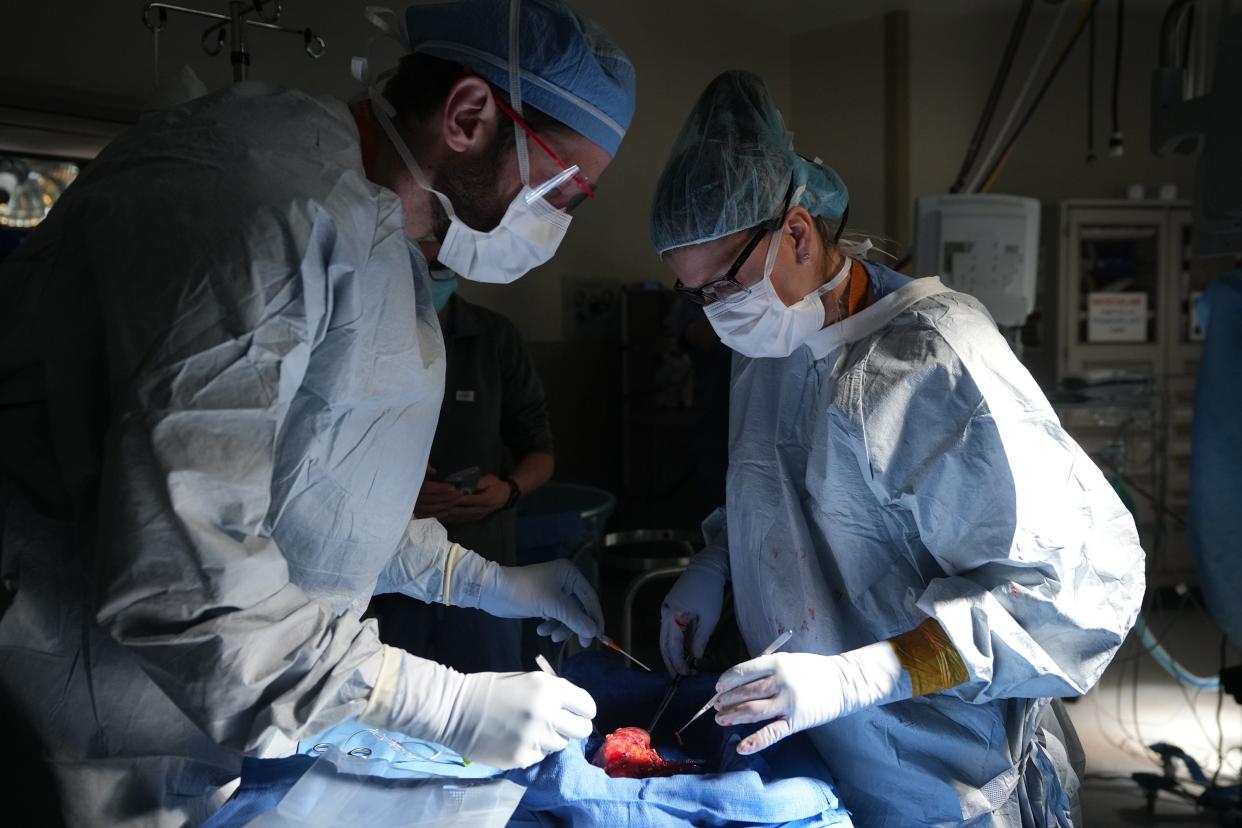
Central Texas is no longer a quiet medical community. It's becoming a not-so-sleeping giant of innovation and collaboration, a place where residents can see specialists at the top of their fields at home, and a place that is attracting patients from around the world to seek care.
In the next seven years, Central Texas will have at least seven new hospitals, and expansions at nine of its current hospitals. And that is just what already has been announced. These new hospitals include new players in the Austin area, MD Anderson and Texas Children's Hospital.
What has changed in Central Texas health care?
Two big factors have affected local health care.
The population of Central Texas exploded. The Austin metropolitan area has been one of the fastest-growing metropolitan areas in the country, according to the U.S. Census Bureau. From 2000 to 2020, the population grew by almost 152% to almost 2.3 million people, up from 911,000. Our hospital systems quickly reached capacity, cementing the need for new hospitals or expansions at current hospitals.
"There's always an inflection point in any community where you can choose to stay stagnant or you can choose to double down and increase services," said Andy Davis, president and CEO of Ascension Texas, which owns all the Ascension Seton hospitals including Dell Seton Medical Center, Ascension Seton Medical Center and Dell Children's Medical Center. "That's what you're seeing."
The three big hospital systems — St. David's HealthCare, Baylor Scott & White Health and Ascension Texas, along with Central Health, the indigent care provider for Travis County, and the University of Texas Dell Medical School — have all been studying the growth in the area when determining where to open new hospitals or clinics, and where to start new programs. They are buying land now for future expansions. They are also looking at what health services Central Texans are leaving Central Texas for and what services have the longest wait times to see a specialist.
"We are looking down the road at what those metrics are going to be three to five years from now," said David Huffstutler, the CEO and president of St. David's HealthCare. "We have to start now."
And part of what's driving the need for more health care facilities is the aging population. People older than 65 make up the biggest population growth in Austin. They require more hospital space. At the other end, a baby boom is driving the need for more women's services and neonatal intensive care units.
"There is no evidence that the growth and the demand is going to weaken," Huffstutler said.
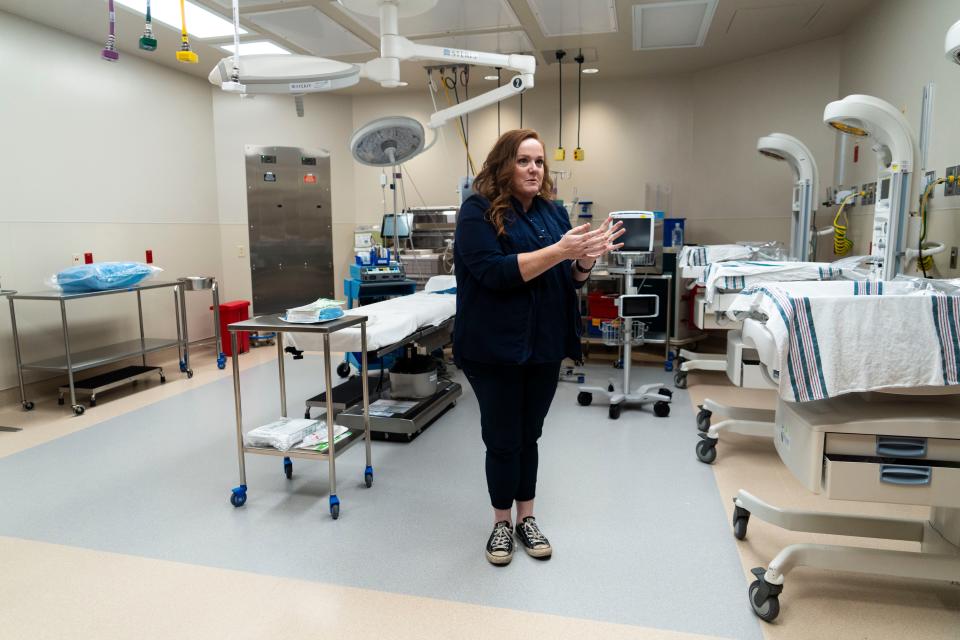
The second factor for growth in health care: UT decided to build a medical school in Austin, and the Legislature and the community voted for it. When the first class walked onto the campus in 2016, a growing number of medical specialists and researchers came with them and are continuing to arrive. These are people who would not have come to Austin without the opportunity to teach at a medical school.
"We've attracted the top talent across the country," said Dr. Claudia Lucchinetti, dean of the medical school and UT senior vice president of medical affairs. "They lead their associations."
The specialists who came were able to build an integrated team and think differently, she said. She gives the example of Dr. Charles Fraser Jr. coming to Dell Children's and Dell Medical School in 2018 to begin the Texas Center for Pediatric and Congenital Heart Disease. This year, that team was one of the first in the world to do a partial heart transplant. That team is also integrated with the adult team at Ascension Texas hospitals and Dell Medical School, something that is unusual in cardiac care and allows for unique collaboration.
"That kind of evolution is impactful for Central Texas," Lucchinetti said of the heart program.
The medical school's recruits have filtered down to the local hospitals and clinics where they work. "If there was not an academic affiliation, they wouldn't choose us," Davis said.
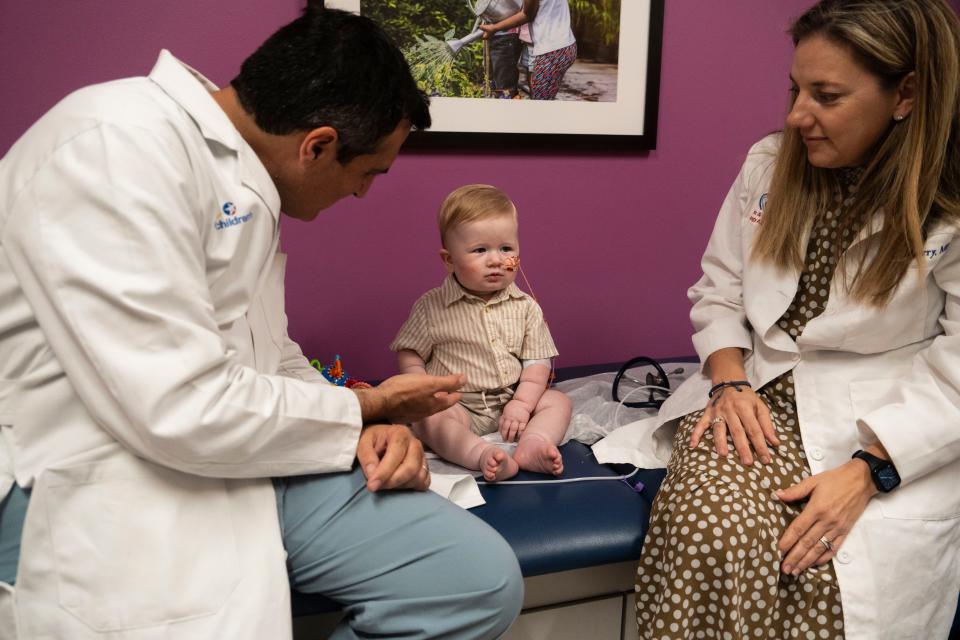
For the medical school, it's now time to make the next jump, said UT President Jay Hartzell. That includes integrating technology and research in collaborations between the medical school and departments across the university, as well as building two new hospitals on the site of the Erwin Center: an MD Anderson cancer hospital and UT specialty care hospital.
Planning for those hospitals is underway, and Hartzell expects the Erwin Center to be torn down within the next 10 to 11 months. The university is also working out a partnership with Ascension Texas to potentially be part of that specialty hospital. Those hospitals are expected to open by 2030, though Hartzell said: "I keep pushing for it earlier. The market needs it. We're working as fast as we can."
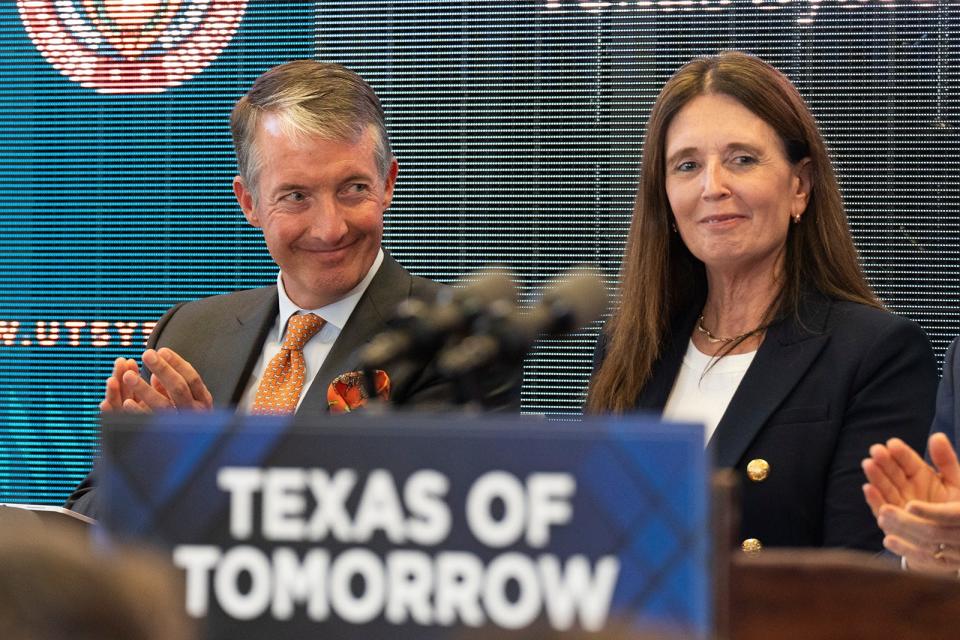
How does Austin as a tech center affect health care?
Those two factors didn't happen in a vacuum. Austin is a city that encourages innovation and technology.
"There's something special and unique here in Austin that drives innovative, entrepreneurial thinkers," Lucchinetti said. She sees it in the kinds of students who come to the medical school and the kind of researchers and clinicians who are choosing the school.
Long before Dell Medical School, medical device companies like Abbott located parts of their business here. The medical community leaned on innovation happening at other areas of the UT campus and city to try new processes and new technology.
For St. David's HealthCare, part of hospital giant HCA Healthcare, its Austin hospitals host its Texas Institute for Robotic Surgery, which studies the latest in robotics technology in about 15 different specialties. Doctors now come from all over the world to observe robotic procedures at St. David's, said Dr. Thomas Payne, who heads the institute. What starts in Austin gets rolled out at HCA Healthcare's 200 hospitals around the country.
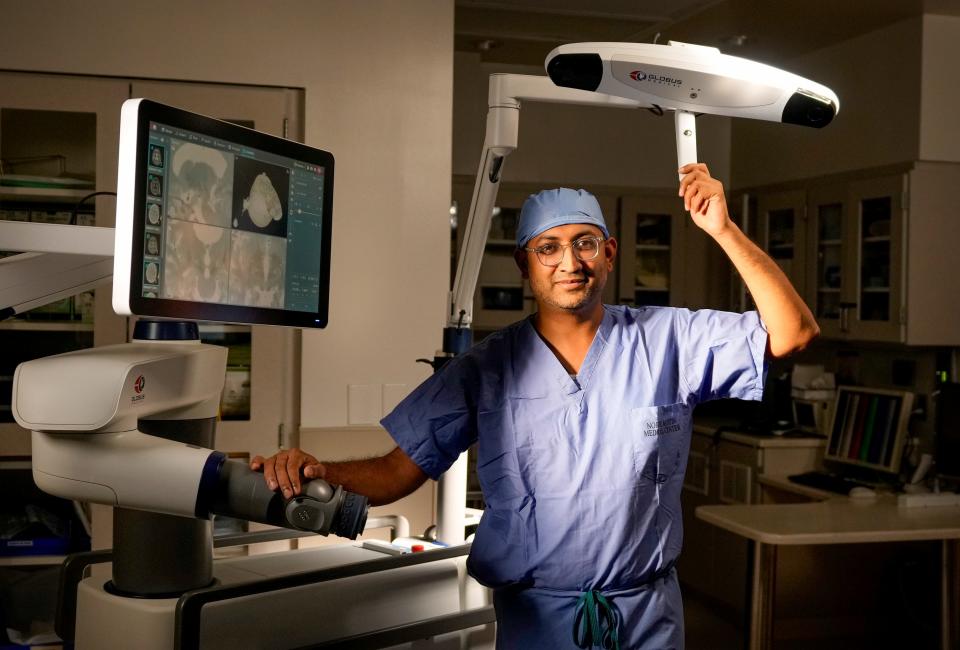
This kind of technology, Payne said, "it's a paradigm shift. It's a whole different ball game."
At UT, the medical school offers an opportunity to put the work of the biomedical engineering department into everyday collaborations, said Dr. Tyrone Porter, UT professor and chair of biomedical engineering. A partnership with MD Anderson and Dell Medical School will "catalyze new research in health care," he said. "It can accelerate it."
Porter sees several areas of growth: artificial intelligence and machine learning in medical care; drug discovery, especially in cancer with MD Anderson, the LiveStrong Cancer Institutes and Texas Biologics all located at UT; biomechanical engineering of new devices for failing hearts as well as cellular engineering to grow tissue to replace damaged heart valves; and brain imaging, brain stimulation and new biomolecular treatments for brain disorders.
"The growth opportunities there are endless," Porter said of the partnerships between the medical school and the Cockrell School of Engineering. Hartzell estimated that one-third of the faculty at UT's engineering school is now working in health sciences.
UT's Oden Institute for Computational Engineering and Sciences also provides an opportunity for the medical school.
When Lucchinetti thinks about some of the other medical schools in Texas, she sees that they do not have the opportunity to be built alongside UT's Oden Institute or Cockrell School of Engineering. "We are now seeing the next phase of the medical school," she said, and its collaboration with all of UT.
What new health services are coming to Central Texas?
Many of the services that Central Texans were traveling to San Antonio, Houston or Dallas for are becoming available in Austin. Three years ago, Dell Children's Medical Center started heart transplants and other complicated pediatric heart surgeries. This year, the children's hospital hired a doctor to build the stem cell therapies and transplant program. The first pediatric stem cell therapies are expected to start in a year.
The abdominal transplant program at Dell Seton Medical Center began kidney transplants in 2022, joining St. David's North Austin Medical Center. The Dell Seton program is now approved to do pancreas transplants, and it expects to do liver transplants in 2025 or 2026, transplants that have not been available in Austin.
Ascension Texas also expects to bring a lung transplant program in partnership with the medical school within the next 10 years, Davis said.
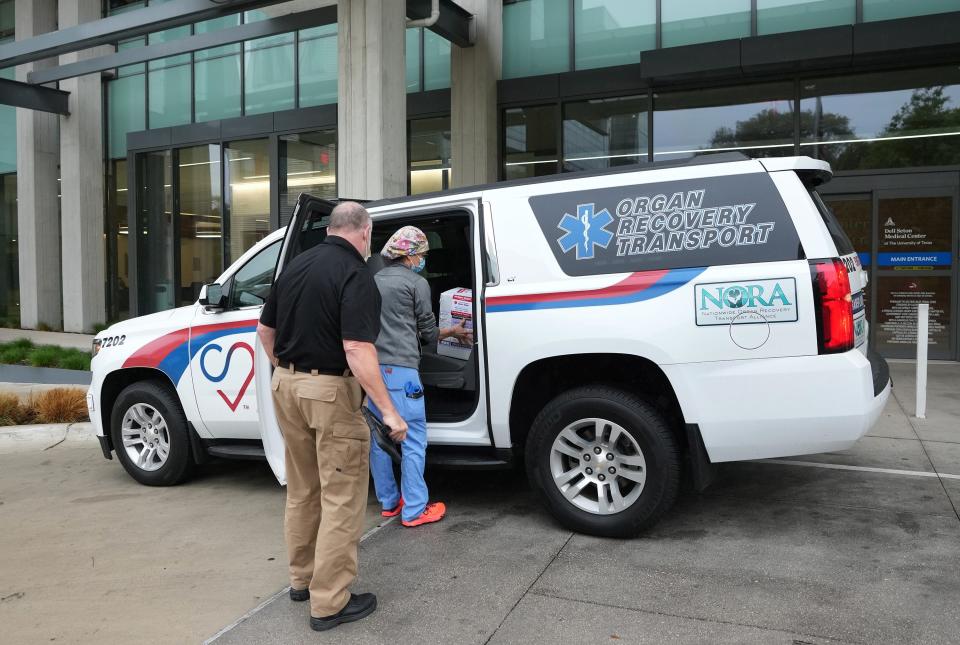
Building transplant programs is staff intensive; "it takes a minute, but it's part of the road map," Davis said.
Among the goals for all the hospital networks and the medical school is to stop the migration out of Central Texas for care. Lucchinetti is looking specifically at transplant, complex cardiovascular, orthopedic musculoskeletal and neurological diseases as areas of migration for which the medical school and its UT Health Austin clinical arm are working to expand services.
In cancer care, Austin has long had strong cancer centers including Livestrong Cancer Institutes at Dell Medical School, Texas Oncology and St. David's Sarah Cannon Cancer Institute. MD Anderson will also bring its expertise.
A lot more clinical trials are being done here, especially in the realm of cancer. The need to travel for a clinical trial, "that's not the case anymore," Huffstutler said. He points to the work the Sarah Cannon Cancer Institute is doing right now, before MD Anderson arrives.
St. David's cardiac electrophysiology department is one of the best in the world, which means that when technology companies are developing new devices and techniques, Austin patients are among the first to participate in the human clinical trials, Huffstutler said.
"A lot of people in our community don't often realize you don't have to leave" to participate, he said.
Hospital networks are also thinking differently about expansion. That doesn't necessarily mean brick-and-mortar buildings, said Jay Fox, the Austin area president for Baylor Scott and White Health. His hospital system is launching 24-7 virtual care for people to get health questions answered on the phone or in its app.
"How do we personalize things so it feels personal?" is a big question Baylor Scott and White is asking, Fox said.
Where does health equity fit in?
For any health care community, health equity remains a sore point. Central Health, tasked with caring for anyone making less than 200% of the federal poverty level, opened a clinic last month in the Hornsby Bend area and is finishing a clinic in Del Valle. It has added a specialty care clinic at Rosewood-Zaragosa.
Central Health cannot build fast enough. Already, a month into having its first gastrointestinal specialist, appointments are full until February. It will be hiring more providers.
Many of the providers it is hiring have ties to the medical school and want to work with the demographics Central Health serves. Its patients are 2½ to three times sicker, said Dr. Alan Schalscha, Central Health's chief medical officer, and need to see specialists more often. Medical school students also seek out learning from Central Health patients.
Central Health has also planned a respite care facility on Cameron Road and a clinic in the Hancock neighborhood. This is in addition to the partnerships it already has with People's Community Clinic, UT Health Austin, Lone Star Circle of Care, CommUnityCare and other medical practices.
One big challenge: With all the innovative programs coming to Central Texas, how does a hospital district afford that care for its clients?
"We want to level the playing field," said Jonathan Morgan, the Central Health chief operating officer. "We want our patients to have access to the same opportunities."
Currently, transplant services are not part of hospital district programs around the state because of the expense, said Monica Crowley, Central Health's chief strategy and planning officer and senior counsel, though Central Health will examine if there is a way to provide that in the future. Currently, it tries to move those patients to its Affordable Care Act program Sendero Health or to Medicaid if they qualify.
The medical school is also looking at where those gaps are in determining what specialty care to provide in its UT Health Austin clinics and new hospital. Lucchinetti said the medical school "is not looking to build a two-tier system. ... We have a significant lack of specialty care within Austin. We are helping to close those gaps."
Central Health is also concentrating on how to keep people out of the hospital and has had success doing transition care at Ascension Texas hospitals to either send people to skilled nursing care and respite care or to provide home visits with doctors after a hospitalization. It has been in talks with St. David's HealthCare to offer the same services in its hospitals, but that has not been successful.
Some of Central Health's limitations are that by law it only covers Travis County. Initially it had explored expansion into other counties, but the communities there did not back that expansion, Crowley said.
Do we have a staffing crisis in the making?
As you build these new hospitals and clinics, you have to staff them.
When Dell Children's opened its fourth tower on its main campus last year, not all the rooms could be made available right away in spite of an at-capacity hospital because of staffing shortages.
All the major hospital districts are increasing their affiliations with nursing and technical programs. This fall, St. Edward's University began its nursing program. Last year, St. David's HealthCare partnered with Galen College of Nursing to bring a nursing school next door to its North Austin surgical hospital. Austin Community College partnered with health care training nonprofit Dwyer Workforce Development to fund nursing assistant programs for qualified applicants.
St. David's created a position just to work on partnering with nursing and technical schools to recruit graduates into its workforce.
"We're trying to prime the pump to expand the pipeline of clinical talent in the future," Huffstutler said. It also started its residency program for doctors.
Ascension Texas has tried to get creative with financial incentives such as $10,000 and $20,000 sign-on bonuses and recruiting as well as working on retention, Davis said.
Baylor Scott and White started paying up front for employees to go back to school instead of doing a reimbursement program, and it has worked on improving its turnover rates by engagement with employees. "If you have high turnover, you're constantly looking for employees," Fox said.
Can these health companies work together?
One of the biggest benefits that came out of the pandemic was the connection of senior leadership at local hospitals through the Austin Health Care Council. Hospital networks' leadership credits this council and the partnership it formed as the reason Central Texas did not experience the mortality rates other areas our size experienced.
"When something happens, we already have those relationships," Fox said. "It makes it very easy: one phone call or text, 'we have to talk.' We're all reacting as a whole."
That doesn't mean it is all hugs and kisses among the major health care players in Central Texas. Ascension Texas and Central Health are currently suing each other over their joint contract to provide care for people at or below 200% of the poverty level. A group of citizens is also suing Central Health for its community-approved $35 million annual support of Dell Medical School. Travis County also ordered a performance audit of Central Health, which is expected to be completed in June.
These lawsuits remain ongoing with no timeline for completion.
Can Central Texas be competitive among health care giants?
If you compare it with the Mayo Clinics, Johns Hopkins and Stanford University, Central Texas has a ways to go.
"Our intention is to absolutely be in the top 10," Ascension Texas' Davis said of all the nationwide medical centers. "Our aspirations are not to be anything but the best."
UT's Hartzell compares what is happening in Central Texas health care as similar to what happened in the tech sector two decades ago.
The goal is that in 10 years: When people think of "where are the most innovative and exciting innovations in life sciences, they think of us," Hartzell said.
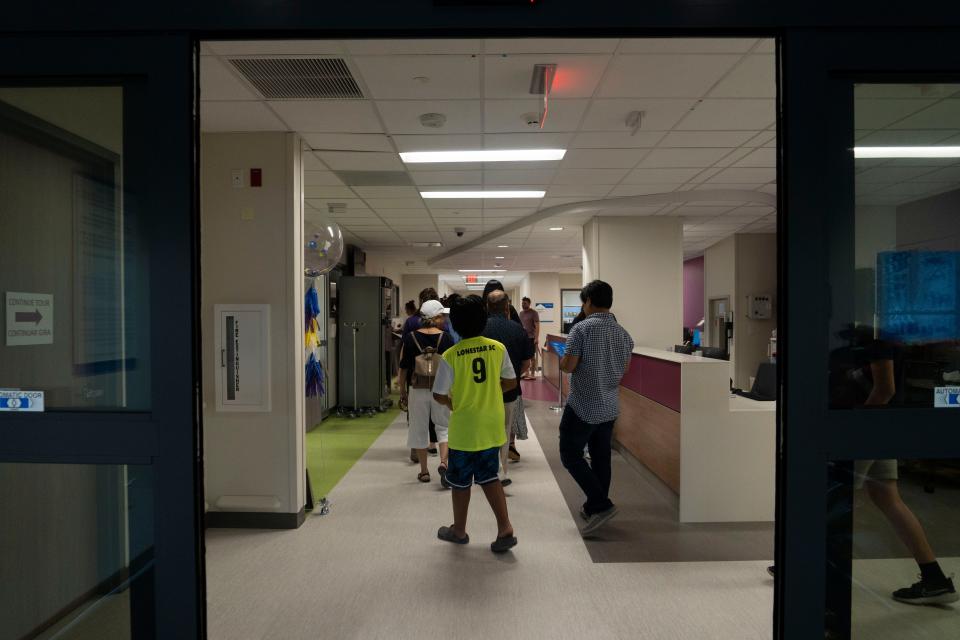
What new Central Texas medical centers are planned?
NEW HOSPITALS
∙ Dell Children’s Medical Center North, opened in April. It was a $191 million project.
∙ Texas Children’s Hospital in North Austin, opening Feb. 1. It's a $485 million project.
∙ St. David’s Leander Medical Center, a $142.5 million project that started as an emergency center and now has a medical office building. Design and permitting will begin in 2024.
∙ St. David’s Kyle Medical Center, a $185 million project that will start with a free-standing emergency department in 2024 on 50 acres off RM 1626 and eventually grow to a medical office building and hospital.
∙ St. David’s behavioral health hospital near its North Austin campus will be a $35 million building. Construction will begin next year.
∙ MD Anderson Austin location at the site of the current Erwin Center to open in 2030 in a $2.5 billion partnership.
∙ Specialty Hospital at UT at the site of the current Erwin Center to open in 2030.
EXPANSIONS
∙ St. David’s Women’s Center of Texas at St. David's North Austin expansion and neonatal intensive care unit expansion, opened in July. Some renovation is ongoing. It is a $149 million project. A new parking garage is also being built.
∙ Ascension Seton Medical Center's new Women’s Center Tower is a $320 million expansion that is under construction and expected to open in 2025.
∙ Dell Seton Medical Center at the University of Texas, is adding four stories on one side and another story on another. The $280 expansion project began this summer. It's expected to open in 2025.
∙ Ascension Seton Williamson Medical Center in Round Rock will almost double in a $230 million investment. That is expected to open around 2026.
∙ Baylor Scott & White Round Rock Medical Center, a $220 million project to almost double that hospital. It will open in 18 months
∙ St. David’s Round Rock Medical Center's expansion is almost complete with the medical surgical unit now opened. It's a $53.1 million project.
∙ Heart Hospital of Austin is expanding its capacity by 25% in a $20.9 million project.
∙ St. David’s Medical Center is expanding its rehabilitation hospital by another floor and adding patient rooms, postoperative rooms and renovating its women's services unit. It's a $46 million project expected to be completed in 2024.
∙ St. David’s South Austin's $81 million expansion including a seventh floor, parking garage and women's center is almost complete. An additional $168 million expansion to add beds, operating rooms and a rehab unit is almost finished. Another building project will begin next year because the hospital has already reached capacity.
∙ Baylor Scott & White Pflugerville Medical Center is expanding to include urgent care on site, additional emergency and trauma services, more imaging options, a new heart catheterization lab and it will triple the clinic capacity. That will open in 2025.
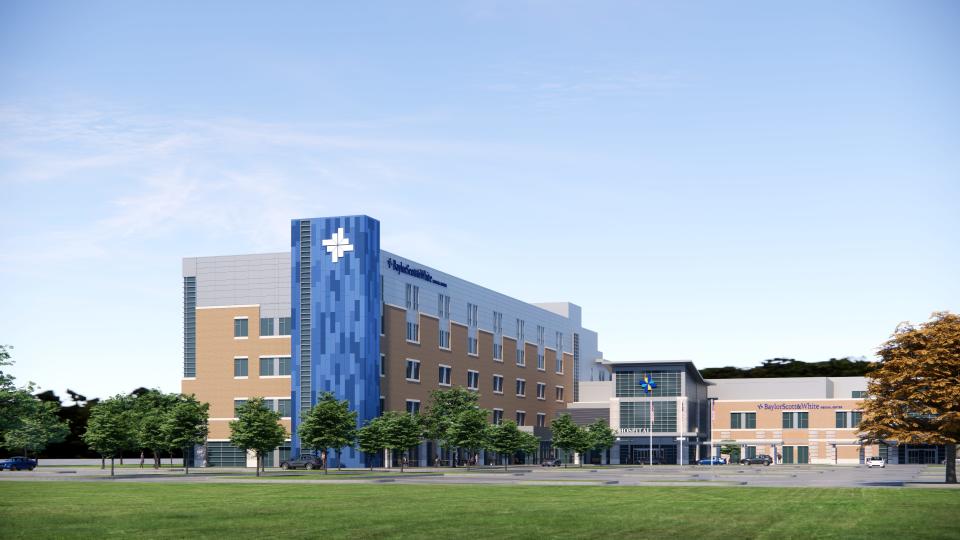
This article originally appeared on Austin American-Statesman: Growth of Austin health care programs

